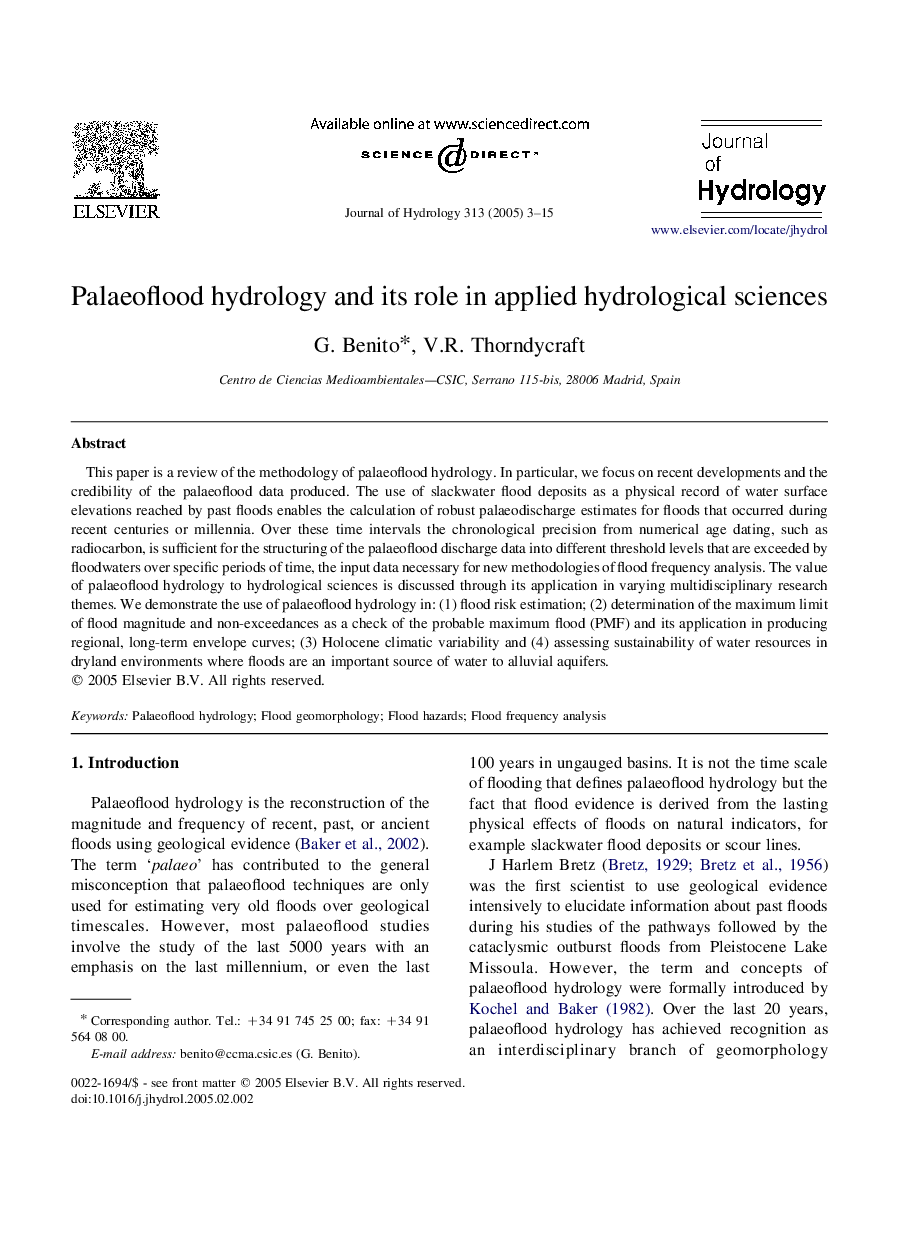| Article ID | Journal | Published Year | Pages | File Type |
|---|---|---|---|---|
| 9491273 | Journal of Hydrology | 2005 | 13 Pages |
Abstract
This paper is a review of the methodology of palaeoflood hydrology. In particular, we focus on recent developments and the credibility of the palaeoflood data produced. The use of slackwater flood deposits as a physical record of water surface elevations reached by past floods enables the calculation of robust palaeodischarge estimates for floods that occurred during recent centuries or millennia. Over these time intervals the chronological precision from numerical age dating, such as radiocarbon, is sufficient for the structuring of the palaeoflood discharge data into different threshold levels that are exceeded by floodwaters over specific periods of time, the input data necessary for new methodologies of flood frequency analysis. The value of palaeoflood hydrology to hydrological sciences is discussed through its application in varying multidisciplinary research themes. We demonstrate the use of palaeoflood hydrology in: (1) flood risk estimation; (2) determination of the maximum limit of flood magnitude and non-exceedances as a check of the probable maximum flood (PMF) and its application in producing regional, long-term envelope curves; (3) Holocene climatic variability and (4) assessing sustainability of water resources in dryland environments where floods are an important source of water to alluvial aquifers.
Related Topics
Physical Sciences and Engineering
Earth and Planetary Sciences
Earth-Surface Processes
Authors
G. Benito, V.R. Thorndycraft,
